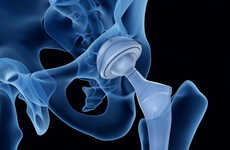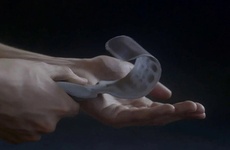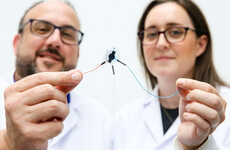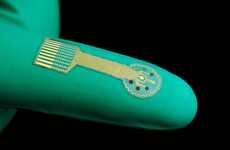
A Newly Developed Self-Healing Material Could Be the Future of Robotics
Justin Lam — June 4, 2018 — Unique
References: washingtonpost & dezeen
By combining the properties of metal and plastic, researchers at US university Carnegie Mellon have created a new self-healing material that could present new and exciting opportunities for soft robotics and wearable tech. The material is currently nameless and is a composite comprised of liquid metal drops suspended in an elastic polymer. These metal droplets respond to damage by forming new connections with neighboring droplets and rerouting electrical signals.
As a practical building source, the self-healing material could eventually lead to robots that could repair their skin like humans, or ultra-thin wearable tech that would not face degradation over time and exposure to the elements. Further suggested uses of the self-healing material include first responder applications, as well as inflatable architecture that could withstand the harsh environments of Mars.
Image Credit: Carnegie Mellon
As a practical building source, the self-healing material could eventually lead to robots that could repair their skin like humans, or ultra-thin wearable tech that would not face degradation over time and exposure to the elements. Further suggested uses of the self-healing material include first responder applications, as well as inflatable architecture that could withstand the harsh environments of Mars.
Image Credit: Carnegie Mellon
Trend Themes
1. Self-healing Materials - The development of self-healing materials presents opportunities for the advancement of soft robotics, wearable tech, and other industries that require materials that can repair themselves.
2. Liquid Metal Composites - The use of liquid metal composites could revolutionize various industries, including robotics, electronics, and architecture.
3. Responsive Materials - Responsive materials that can change and adapt to their environment have potential applications in fields like medicine and construction.
Industry Implications
1. Robotics - The use of self-healing and liquid metal materials could revolutionize the robotics industry by creating robots that can repair themselves.
2. Wearable Technology - Self-healing materials can lead to the development of ultra-thin and durable wearable technology that can withstand the elements.
3. Architecture - The use of self-healing materials in inflatable architecture could lead to structures that can withstand harsh environments and repairs itself.
3.5
Score
Popularity
Activity
Freshness























